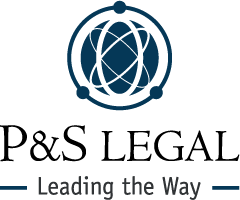On December 18, 2006, Regulation Nr. 1907 was approved, which takes the name of REACH, or Reach Regulation: it is the acronym for registration, evaluation, authorization and restriction of chemicals.
ARTICLES OF THE REACH REGULATION
The REACH Regulation consists of 141 articles and 17 technical annexes.
The objective of this Act is to improve health protection through better awareness of the risks posed by chemicals, to identify alternative methods for assessing the hazards of such substances and also to strengthen the competitiveness of the European chemical industry.
The REACH Regulation established the Helsinki-based European Chemicals Agency (ECHA), which is responsible for receiving and assessing the conformity of company registrations.
Article 5 of REACH provides that, in order to continue commercializing chemicals, a registration must be drawn up if the quantitative limit of 1 tonne per year is exceeded.
The authorities and scientific committees within the Agency will then determine whether the dangerousness of the substances is manageable or not.
If the opinion is negative, ECHA has the right to ban them, restrict their use or make them subject to a particular authorisation.
Substances requiring authorisation include, for example, the categories carcinogenic, mutagenic and toxic for reproduction (CMR) and persistent, bioaccumulative and toxic (PBT) substances.
In addition, information and technical assistance platforms for companies in each EU Member State have been set up under the name of “national helpdesks“.
As a result, many companies are affected by the framework, including those that at first glance are not interested in chemical issues.
The REACH Regulation divides companies into three categories according to their role: manufacturers, i.e. producers; importers, i.e. those who buy articles outside the single market that may have been in contact with substances; and finally downstream users, i.e. companies that use chemicals for their industrial activities.
REACH consulting is of paramount importance in order to avoid the heavy fines provided for in the Regulation.
Since this is an act that has immediate application and direct effect in the laws of individual states, the REACH regulation has immediately entered into force in all member states of the European Union.
The application of the Reach regulations relating to controls and the strict sanctioning framework is left to the national competent authority and the local competent authorities, which in Italy are respectively the Ministry of Health, and those identified by the Regions and the Autonomous Provinces of Trento and Bolzano.
As far as controls are concerned, both the Ministry and the local authorities identify administrations and law enforcement agencies operating on the territory.
At the state level, among others, it is worth mentioning NOE (ecological operating units), NAS (antisophistication and health units) and USMAF (maritime, air and border health offices).
At the regional level we find ARPA, the regional agency for environmental protection.
Reach sanctions can reach up to €90,000 for non-compliance with the obligations of the regulation, but consider that even the failure to register can cost the company up to €15,000.
The regulation of Annex XVII of the Reach Regulation is particularly burdensome.
This identifies the conditions and restrictions laid down for the production, placing on the market or use of certain chemicals by any of the parties already mentioned in the previous article (manufacturer, importer or downstream user).
In the event of violation or non-conformity of the methods of use by the subject, he can be punished with imprisonment of up to 3 months or with a fine from €40,000 to €150,000.
Our professionals have been working as reach consultants for many years and also assist companies in proceedings to challenge the relevant penalties.

